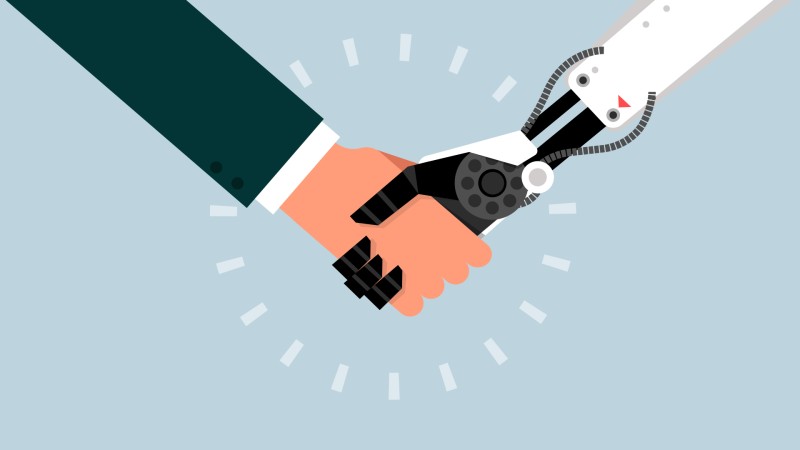Let’s face it: Warning people that robots are stealing their jobs grabs far more attention than the truth. While it’s true that some jobs are better suited for automation, the reality is that even artificial intelligence needs a human touch. Bots and humans will be better together.
As consumers, there’s an increasing chance that we’ve interacted with an artificially intelligent bot without realizing it. According to Tata Consultancy Services, 32 percent of major companies are applying AI to customer service. And more companies are following suit. More than 33 percent of executives indicated that over the next two years, they’ll be investing in AI and robotic process automation for the contact center, according to Deloitte.
But an AI bot can only do so much. Humans are still needed to support customers that don’t want to interact with a bot, and to resolve issues that are beyond a bot’s capabilities. In fact, according to a survey by Forrester Research, enterprises that have blended AI with humans report that their customer service efforts are more effective at improving both customer satisfaction (61 percent) and associate satisfaction (69 percent).
As employees, it’s time to stop thinking about robots as a threat but rather as something to collaborate with. Envision a hybrid service workforce where intelligent virtual assistants (IVAs) and humans work together to serve the customer. The IVA assists humans by handling common requests and retrieving data, allowing human associates to focus on engaging the customer.
As a result, the human associate’s role in the contact center and required skill set will shift. Humans will handle complex issues and be skilled in analysis, critical thinking, and emotional intelligence.
In some cases, the associate may send the customer back to the IVA to complete an interaction, such as processing a payment. At the same time, humans will continue to train the IVA to be even more efficient in a closed, symbiotic loop.
Building a successful partnership between humans and IVAs requires programming the bot with the data it needs, training it, and implementing processes and protocols for seamlessly transferring the customer from a bot to an associate and vice versa.
To learn more about how to combine the strengths of humans and bots in a new collaborative workforce, check out our e-book, Don’t Fear Bots in Your Contact Center.
Forget the Robot Apocalypse: Let’s Talk About a New Collaborative Workforce















